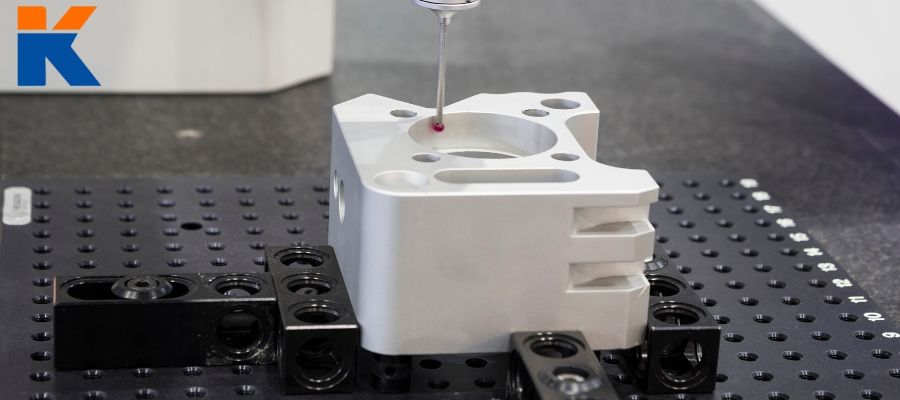Aluminum Castings Company Can Be Fun For Anyone
Table of ContentsMore About Aluminum Castings CompanyAll About Aluminum Castings CompanyFacts About Aluminum Castings Company RevealedWhat Does Aluminum Castings Company Mean?The 15-Second Trick For Aluminum Castings CompanyHow Aluminum Castings Company can Save You Time, Stress, and Money.Aluminum Castings Company Things To Know Before You BuyAluminum Castings Company Fundamentals Explained
There are 2 key kinds of die casting used in the light weight aluminum casting industry: hot chamber die casting and cold chamber die spreading. The main difference between these approaches is exactly how the molten metal is supplied to the mold. In warm chamber pass away spreading, commonly used for reduced melting factor metals, the melting pot is directly connected to the maker, and a plunger forces the material via a gooseneck right into the die tooth cavity.
The Best Guide To Aluminum Castings Company
In these techniques, the mold and mildew is deliberately ruined or escaped in order to remove the completed aluminum casting. Common procedures under the classification of expendable mold and mildew casting include (investment spreading),,, and investment casting. When making customized light weight aluminum parts using expendable mold and mildews, producers pour molten light weight aluminum or light weight aluminum alloys right into the mold and mildew, which is then busted apart to launch the solidified metal part.
The is just one of the earliest and most favored kinds of light weight aluminum spreading. It includes compacting specialized factory sand, commonly reinforced with clay or resin, around a precisely crafted multiple-use pattern that determines the form and internal details of the ended up aluminum item. The pattern system incorporates risers and vents to take care of the circulation of molten steel and to stop casting defects such as shrinkage porosity.
See This Report on Aluminum Castings Company

This mold and mildew is then preheated before the putting of liquified light weight aluminum or light weight aluminum alloy. As the steel fills the shell, it records the intricate information and great surface coating of the mold and mildew. Once cooled down, the ceramic is mechanically or chemically broken away, enabling the elimination and separation of private cast parts.
3 Simple Techniques For Aluminum Castings Company
Permanent mold and mildew spreading uses reusable steel molds and is suitable for automation with constant high quality and less waste. Expendable mold casting utilizes single-use mold and mildews, like sand or foam, using layout adaptability and reduced tooling costs for models or brief runs. Die spreading is best for generating high volumes of aluminum components that require tight resistances, great details, and smooth surfaces.
The Toshiba Equipment DC-J Collection includes pass away casting devices suitable for light weight aluminum. Recognized for their durable building and construction and high shot performance, these devices make sure efficient and exact spreading (Aluminum Melting and Casting).

While light weight aluminum can be utilized in its pure kind, it is typically alloyed with other metals to enhance its properties or the buildings of the various other steels. Light weight aluminum alloys are classified into eight collection, numbered from one to Read Full Report eight.
Aluminum Castings Company - An Overview
This alloying improves the stamina and hardness of light weight aluminum but reduces its ductility and corrosion resistance. The 3000 series alloys are largely alloyed with manganese.
In addition, it features high ductility and a very smooth completed surface. The 4000 collection alloys are alloyed with silicon, which lowers the melting factor and boosts fluidity. This makes it a popular option for casting, as it is easy to create in its liquified state. The 4000 collection is additionally generally utilized as a filler for welding and brazing applications.
Some Known Factual Statements About Aluminum Castings Company
This collection is categorized as a high-strength alloy, specifically matched for sheet and plate applications as a result of its excellent weldability. Its resistance to corrosion from acids and alkalis makes it suitable for use in harsh and hostile environments (Metal Castings). The 6000 collection alloys are alloyed with both magnesium and silicon, providing an equilibrium of stamina, mechanical buildings, and corrosion resistance
Processing the 6000 series calls for specialized and sophisticated tools, which can be complicated and pricey. Nonetheless, this collection is understood for its outstanding corrosion and oxidation resistance, along with its simplicity of coating, treatment, and workability. The 7000 collection aluminum alloys are the greatest and most durable among light weight aluminum kinds, with toughness similar to around two-thirds of industrial-grade A3 steel.
Unknown Facts About Aluminum Castings Company
Zinc is the primary alloying aspect in the 7000 collection, enhancing the hardness of the light weight aluminum, also though zinc's hardness is similar to that of light weight aluminum on the Mohs range. The 8000 series light weight aluminum alloys are mostly alloyed with tin, along with small amounts of copper and nickel (Metal Foundry). While these alloys supply reduced stamina compared to various other series, they master machinability and use resistance
Aluminum cast heatsinks are electrically conductive, enabling them to be based effectively. They are typically cast with incorporated functions that reduce the need for second operations, such as additional machining or assembly, causing further price savings. Aluminum spreading is regularly used to make brackets for both durable commercial devices and household home appliances.
Aluminum Castings Company - An Overview
The single-piece construction of aluminum brackets enhances their stamina and toughness, lowering the possibility of failing. If holes are called for, they can be included directly in the spreading mold, minimizing the requirement for post-production completing (https://calendly.com/kelliphillips61401-proton/30min). Producers have significantly embraced light weight aluminum spreading for golf devices due to its resilience, security, and versatility in shaping